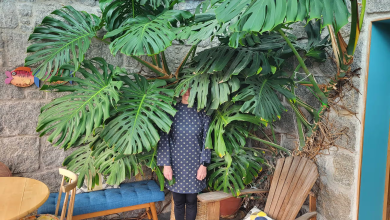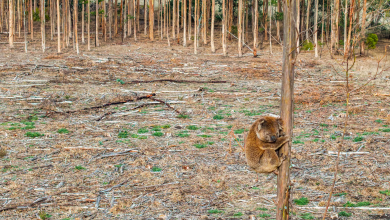“It’s Like Jaws Meets Finding Nemo”: Toxic Algae Wipes Out 200+ Species Along South Australia’s Coast
A toxic algal bloom off the South Australian coast has killed more than 200 species of marine life, including sharks, octopuses, and sea dragons. Here's what caused it, and what it means for Aussie ecosystems and seafood industries.

South Aussie Coast Hit by a Real-Life Aquatic Apocalypse
South Australia’s coastline is currently starring in its own low-budget marine horror flick, and unfortunately, the cast is made up of real-life fish, sharks, and octopuses — all victims of a toxic algal bloom that’s been spreading since March 2024.
The villain? A microscopic menace called Karenia mikimotoi, an algae that’s doing more damage than a hungry great white on a seafood diet.
The Devastation in Numbers
| Affected Category | % of Dead Species | Notable Examples |
|---|---|---|
| Ray-finned fish | 47% | Snapper, whiting, mullet |
| Sharks & Rays | 26% | Gummy sharks, stingrays |
| Cephalopods | 7% | Squid, octopuses, cuttlefish |
| Decapods (Crustaceans) | 6% | Crabs, lobsters, prawns |
| Others (incl. rare) | 14% | Leafy sea dragons, bivalves, shellfish |
What’s Karenia mikimotoi, and Why Is It So Deadly?
Described by scientists as a “toxic blanket”, this algae isn’t just bad news — it’s multi-taskingly lethal. According to marine biologist Prof Shauna Murray, it:
- Suffocates fish by clogging their gills
- Acts as a neurotoxin (turning Nemo into a confused mess)
- Causes internal bleeding in fish
- Has turned local beaches into morgues for sea creatures
Environmental Factors Fueling the Bloom
- Sea Temps: 2.5°C hotter than usual
- Winds: Too calm, with weak marine movement
- Swell: Small waves = less water turnover
- Region Impacted: From Fleurieu Peninsula to Kangaroo Island, 150+ km stretch
“This bloom is the worst we’ve ever seen in SA,” said Brad Martin from OzFish SA, “It’s like a horror movie, but the victims are fish.”
Economic & Ecological Fallout
- Oyster farms shut down
- Pipi harvesting paused
- Commercial fisheries impacted
- Fingerlings and breeders lost
- Tourism suffering from beach closures and fish die-offs
“It’s hit everything from baby fish to breeding-age adults,” said Martin. “We’re talking long-term damage to ecosystems and seafood supply.”
What’s Being Done?
- Experts call for better warning systems — to detect harmful algal blooms early
- Calls for climate action — as marine heatwaves continue to rise
- Need for wind — Yes, literally. Strong westerlies are nature’s only known cure for dispersing Karenia blooms
The state’s Environment Department confirmed that persistent high-pressure systems were delaying the winds needed to break the bloom’s hold.
Not the First Rodeo
Back in 2013, a similar algal bloom — Alexandrium catenella — shut down the entire Tasmanian seafood industry for four months. And this one might not be far behind.
What Locals Are Saying
“It’s like if Jaws was made by Pixar — everyone’s dying, and it’s colourful.” – A local fisherman, probably
“Our oysters are out of work. Even the pipis have pipi-ed off.” – SA seafood processor
Final Word
Between climate change, rising sea temps, and algae on a murder spree, Australia’s marine life is under siege. While the bloom isn’t a threat to humans (unless you’ve got very sensitive skin or gills), it’s a harsh reminder that our ocean systems are on a knife’s edge — and that even microscopic enemies can pack a massive punch.


